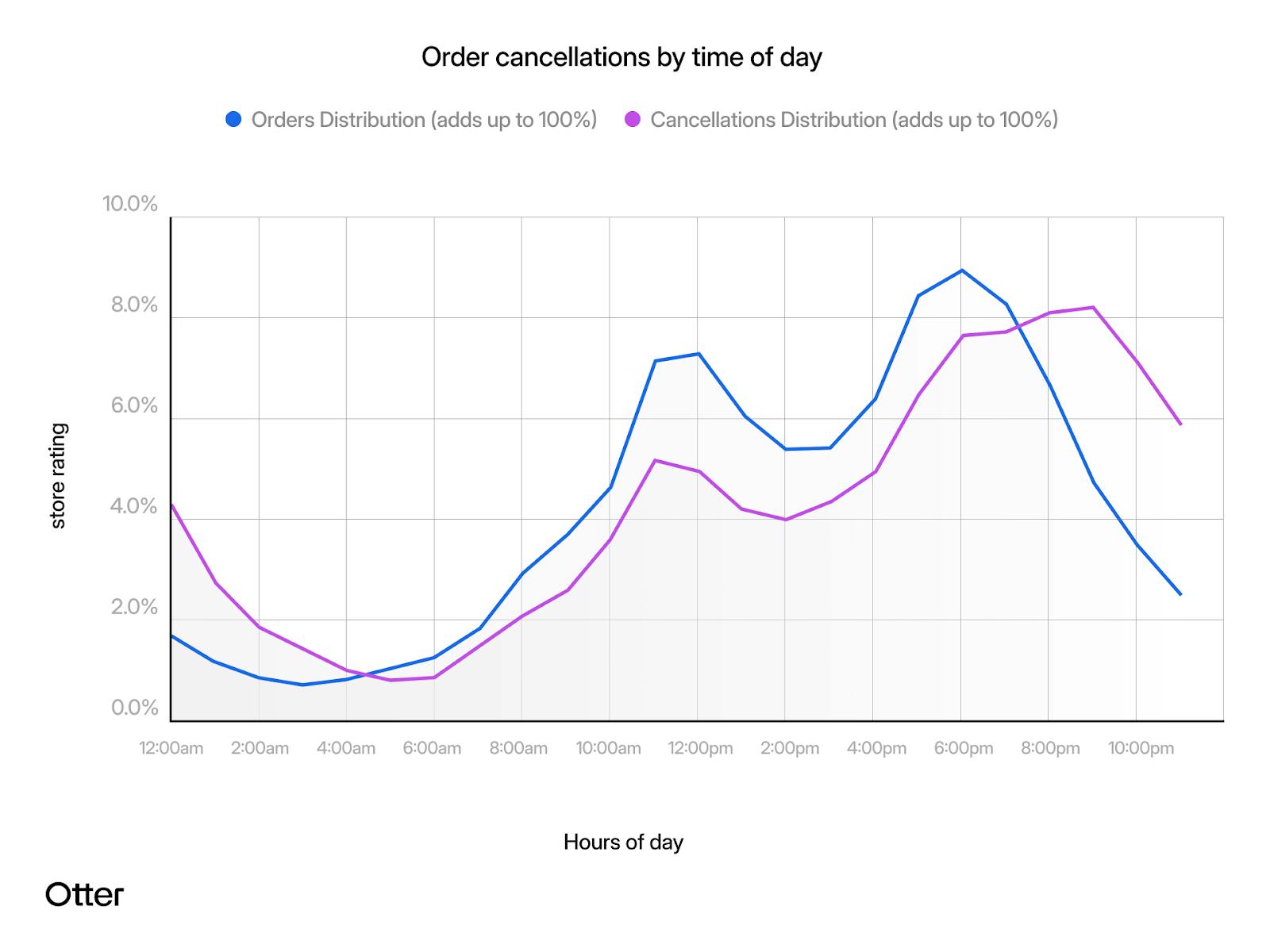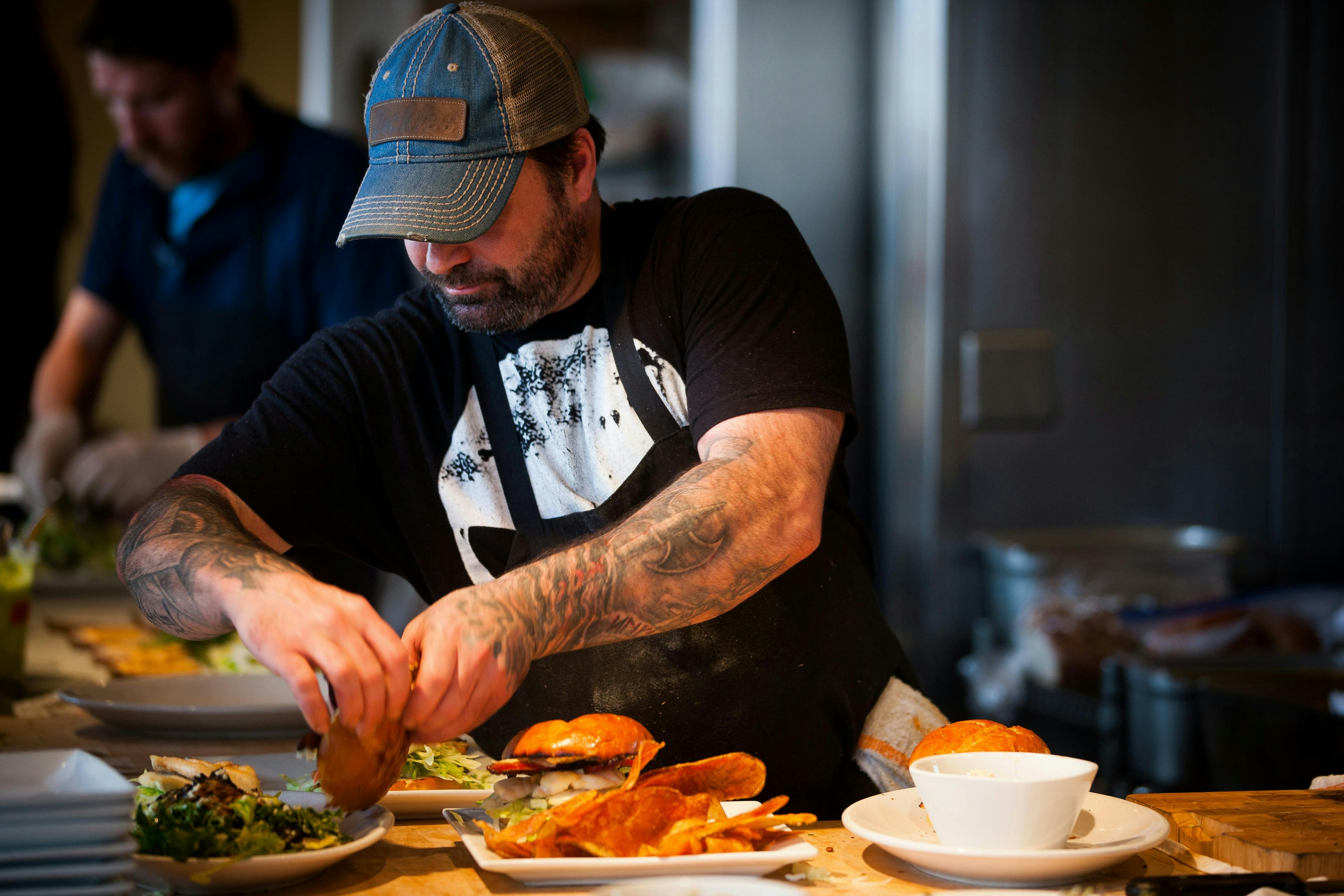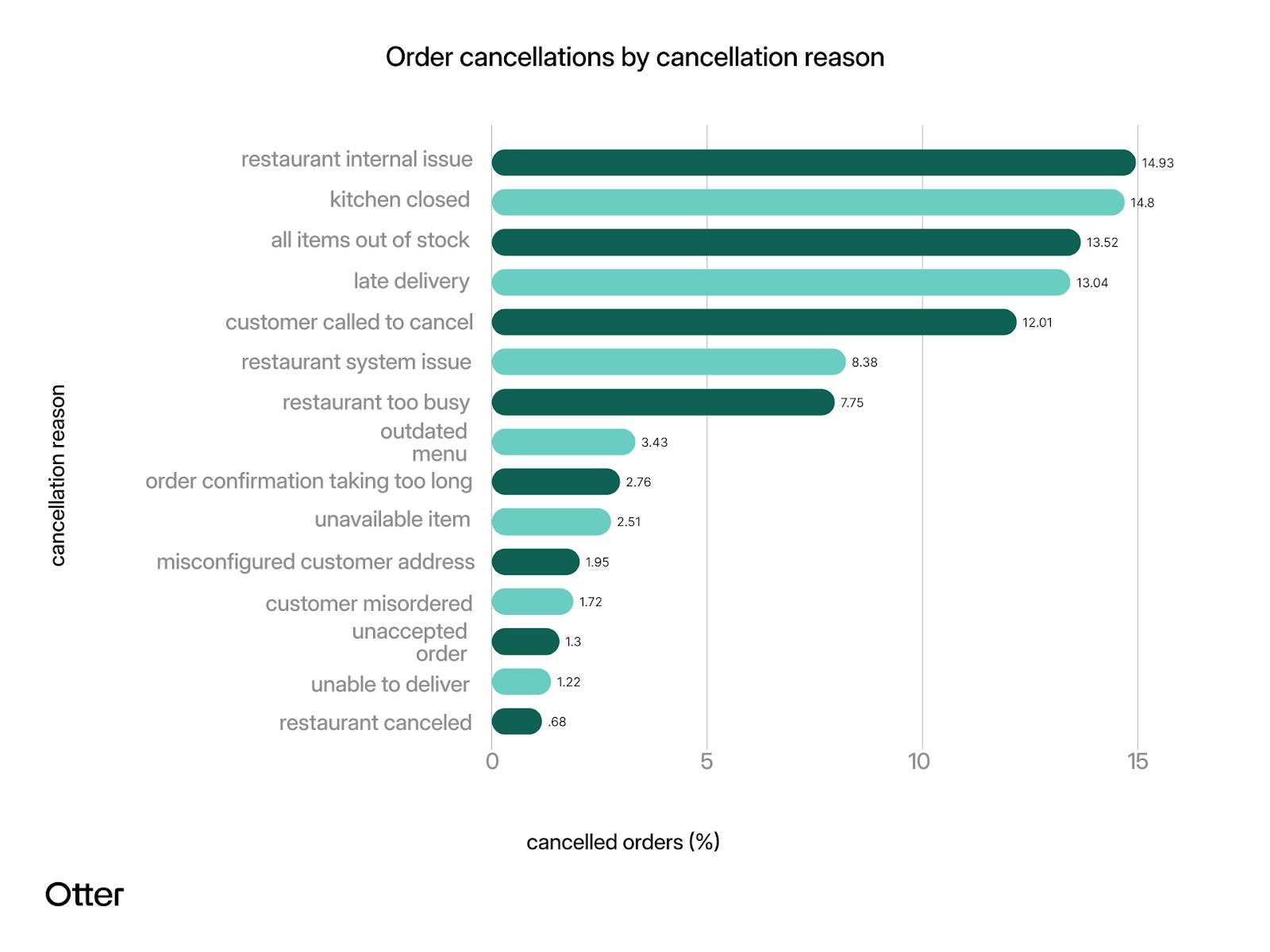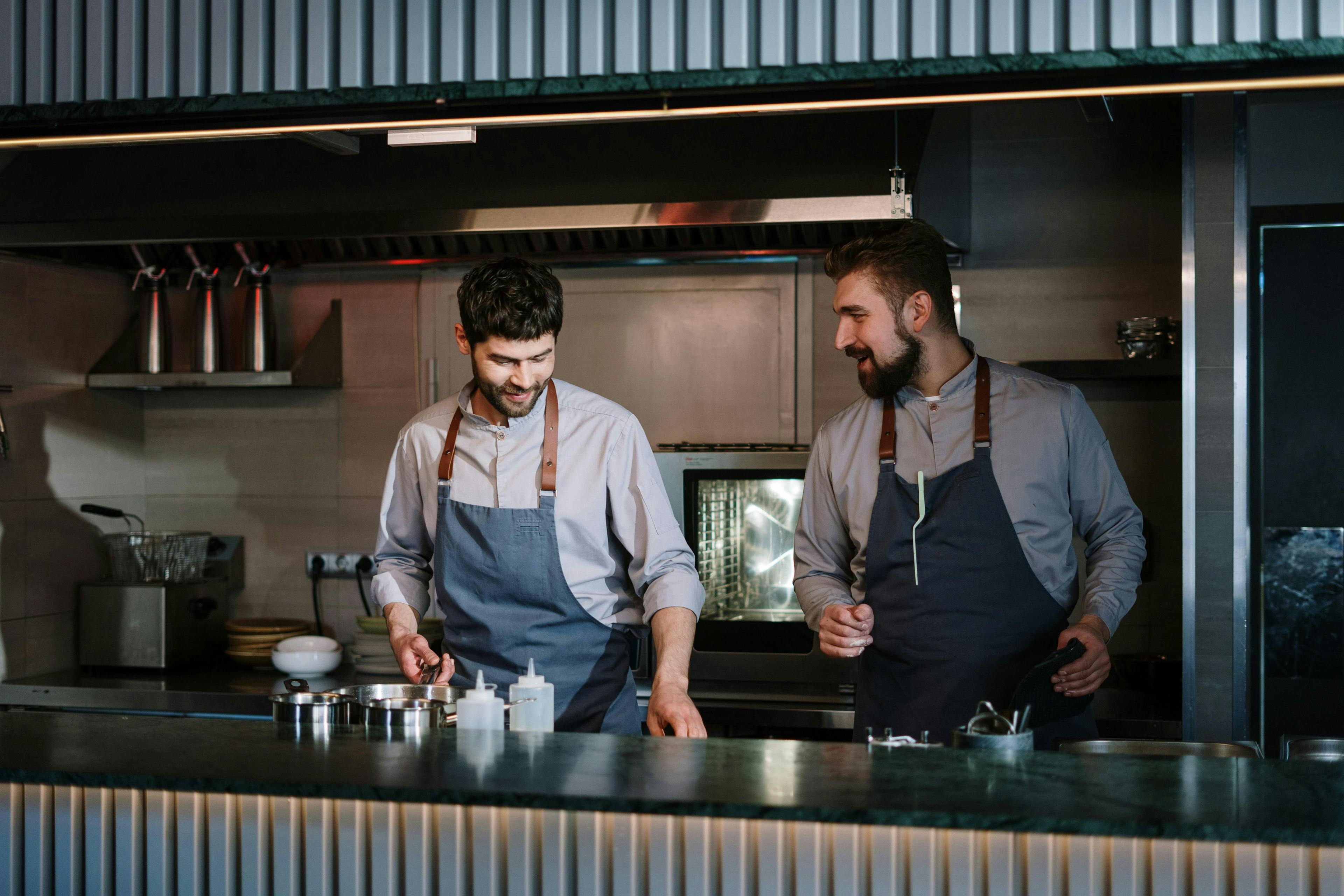
In an industry with razor-thin margins, every dollar matters. Demand generation is one side of the coin – bringing in new & repeat customers to drive increased orders and sales. But maintaining operational excellence is equally critical to make the most of every order placed. In an era marked by a surge in online order volume, a critical strategy for upholding operational excellence involves minimizing order cancellations. Cancellations happen when a customer places an online order which is then rescinded, for whatever reason, by the customer or the business receiving that order.
Particularly during the holiday season – when staffing is challenging and order volume varies – it’s key to make sure your online operations are tight so you can avoid canceled orders.
We took a look at over 1 billion orders that we’ve processed over the past couple of years to gain insight on how restaurants can keep cancellations down and revenues up. Read on to learn 5 tips to lower your order cancellation rate.
Why reducing cancellations is critical to your restaurant’s success

Restaurateurs have no shortage of things to worry about. If you’re wondering whether or not order cancellations should be one of those things, consider the following points.
Financial Impact: With the average order cancellation rate ranging from 1.5% to 3%, a restaurant generating $10,000 in weekly revenue could lose between $150 and $300 per week due to cancellations alone. This loss directly impacts a restaurant’s bottom line and can significantly affect profitability.
Effect on Ratings: Order cancellation rates are directly linked to restaurant ratings. Restaurants with lower cancellation rates tend to have higher average ratings. For instance:

- Stores with cancellation rates below 2% boast an average rating of 4.5/5.
- Those with rates between 2% and 4% typically have an average rating of 4.4/5.
- Restaurants experiencing cancellation rates between 4% and 6% average a rating of 4.3/5.
- As cancellation rates exceed 6%, average ratings decrease, with those over 8% averaging just 4.0/5.
Impact on Delivery Apps: Many delivery platforms automatically pause stores that encounter consecutive cancellations or non-acceptances. This results in increased downtime and reduced order volume, which further impacts a restaurant’s bottom line.
5 tips to keep cancellations down at your restaurant
1. Pay close attention to online orders that come in during and after dinner

Online orders experience a significant surge during dinner time, with 32.2% of orders typically occurring between 5:00 p.m. and 8:59 p.m. However, this period also sees a rise in cancellations, with 29.9% of cancellations happening during the same timeframe.
Interestingly, cancellations peak after dinner, particularly between 9:00 p.m. and 9:59 p.m. Despite only 4.6% of the day's orders being placed during this time, 8.2% of cancellations occur within this hour.
To tackle this challenge, consider activating the Auto-accept feature on Otter's Order Management solution. This feature ensures that orders are automatically accepted, eliminating the need for manual intervention by your staff. By enabling Auto-accept, you can reduce order cancellations caused by delays in order acceptance.
2. Make sure your team is prepared to keep up with late-night online orders

Cancellation rates tend to be notably higher than the 1.5-3% average between 8:00 p.m. and 5:00 a.m., peaking between 10:00 p.m. and 4:00 a.m. with rates ranging between 4% and 6%. Additionally, restaurants tend to experience a surge in order cancellations during their final hour of operation, with cancellation rates averaging up to 4.8% higher compared to restaurants that do not close within the hour. Notably, 18% of orders and 28.6% of cancellations occur in the hour leading up to closing time.
To address this issue, start by double-checking your hours of operation and consider incorporating some extra buffer time to prevent orders from being placed right before closing time, such as an order coming in at 9:59 p.m. when your store closes at 10:00 p.m. Once you've confirmed your operating hours, you can use Otter's Always On solution to keep your store’s virtual doors open when they should be.
This feature automatically restores your online ordering capability when your stores are paused by a delivery partner, and can even be customized to reactivate your stores when paused by a staff member. This ensures that you never miss an order, even during busy periods or when staff might forget to update the storefront’s status manually.
3. Pay close attention to the top cancellation reasons:

Understanding the reasons behind order cancellations can be challenging, but sometimes customers or operators provide insight into the cause. According to our findings, the primary reasons for customer-initiated cancellations are late delivery and general customer requests, often stemming from delays. For restaurants, the leading causes of cancellations are internal issues, kitchen closures, and items being out of stock.
Customer-initiated cancellations due to late delivery are controllable. By utilizing Otter's Courier & Logistics solution, you can eliminate cancellations caused by customers and regain control over your delivery timeline. This solution empowers you to manage your or your delivery partner’s courier fleet efficiently and synchronize timing and delivery schedules, ensuring everyone stays informed and deliveries are made promptly.
Internal issues, particularly out-of-stock items, can be addressed with Otter's Menu Management solution. This tool allows you to update menus seamlessly across various locations and platforms, ensuring that both staff and customers have access to accurate and up-to-date menu information, minimizing cancellations due to inventory issues.
4. Maintain tight operations if your business is susceptible to order cancellations

Convenience Stores: With the highest cancellation rates averaging 6.3%, primarily due to items being out-of-stock (27.9%), convenience stores should focus on maintaining inventory accuracy. Use Otter’s Menu Management solution to promptly remove out-of-stock items across all platforms & locations, preventing customers from ordering unavailable items.
Pizzerias: Experiencing the second-highest cancellation rate at 2.61%, pizzeria cancellations are primarily driven by delays in operators confirming orders. Ensure efficient order processing by implementing Otter’s Auto-accept feature, which eliminates missed orders due to human error during rush hours.
Dessert Restaurants: With a cancellation rate of 2.8%, often attributed to unavailable items, it's essential to manage inventory effectively in dessert restaurants. Otter’s Menu Management solution enables instantaneous removal of unavailable items across platforms, ensuring accurate representation of inventory and minimizing cancellations.
By leveraging these solutions, you can streamline operations and reduce canceled orders, ultimately enhancing customer satisfaction and maximizing revenue potential.
5. Double down on staffing and preparation for all major holidays

Cancellation rates spike on major holidays, particularly Thanksgiving (9%), Christmas Day (8%) and Christmas Eve (6.5%). To effectively manage order cancellations during the holiday season, it's important to double down on staffing and preparation efforts. Here's how you can combat holiday cancellations:
Staffing and preparation: Ensure adequate staffing levels and thorough preparation to handle increased holiday demand. Anticipate higher order volumes and plan accordingly to minimize delays and disruptions.
Address specific holiday challenges: On Thanksgiving, Christmas Day, and Christmas Eve, the majority of cancellations stem from kitchen closures (22.4%, 46.2%, and 50.6% respectively). Ensure clear communication with customers regarding holiday hours and availability. Be proactive in managing inventory to minimize out-of-stock items.
Monitor and adapt: Continuously monitor order patterns and customer feedback during holidays to identify potential issues and adapt your strategies accordingly. Stay flexible and responsive to customer needs to mitigate cancellations and maintain a positive holiday experience.
You can leverage Otter’s Menu Management solution to streamline holiday preparations. This tool will allow you to update your menu, remove out-of-stock items, synchronize operating hours across all delivery platforms from a single interface, and set special hours in advance for individual holidays. By keeping your menu and hours up-to-date, you can prevent cancellations resulting from unavailable items or closed kitchens and ensure a smoother holiday operation.
Looking for more ways to beat order cancellations? Try Otter!

The average Otter customer sees a 42% decrease in order cancellations on Uber Eats. If you’re looking for more ways to decrease canceled orders, the team at Otter is here to help. Our Restaurant Operating System offers solutions for your front-of-house, back-of-house, and everywhere in-between.
*Data presented in this post is based on typical Otter customer performance measured from the Otter platform’s backend. Aggregated data has been sourced across all US&C customers from January 1st, 2023 to September 30th, 2023.
Ready to minimize order cancellations and maximize revenue? Schedule a demo with Otter today!

Book a demo to see how Otter’s all-in-one platform can help your restaurant thrive.